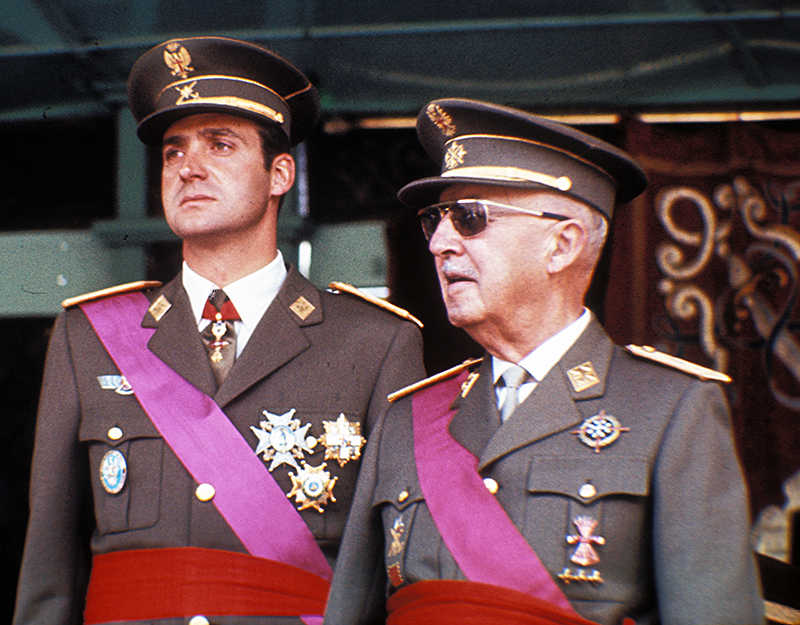Franco, Francisco (1892-1975), was dictator of Spain from 1939 until his death in 1975. He came to power at the end of the Spanish Civil War (1936-1939). In that war, he led the rebel Nationalist Army to victory over the Republican forces. After the war ended in 1939, Franco held complete control of Spain. His regime was similar to a Fascist dictatorship. He carried out the functions of chief of state, prime minister, commander in chief, and leader of the Falange Española, the only political party permitted (see Falange Española ). He adopted the title of El Caudillo (The Leader). In the early years of his regime, Franco tried to eliminate all opposition. He later eased restrictions.

His early life.
Franco was born Francisco Franco Bahamonde on Dec. 4, 1892, in El Ferrol del Caudillo, in the province of La Coruña. His father was a naval officer. Young Franco was trained as an army officer at the Infantry Academy of Toledo. Between 1912 and 1927, he held important command posts in Spanish Morocco. His troops there helped put down a long rebellion against Spanish rule. He was made a general at the age of 34.
In 1931, Spain became a republic. During the next five years, disputes involving Spanish political groups became increasingly severe. At first, Franco avoided becoming involved in the disputes. But when the moderate conservatives won the election of 1933, Franco became identified with them. In 1934, Franco helped put down a revolt by leftists, who wanted sweeping changes in Spain’s way of life. In 1935, he became army chief of staff. The following year, the leftists won the election and sent Franco to a post in the Canary Islands.
Military leaders plotted to overthrow the leftist government in 1936. Franco delayed taking part in the plot, but he was promised command of the most important part of the army. The revolt began in July 1936 and it started a total civil war. Two and a half months later, the rebel generals named Franco commander in chief and dictator. Franco’s forces, called Nationalists, received strong support from Italy and Germany. On April 1, 1939, after 32 months of bitter fighting, the Nationalists gained complete victory. Franco then became dictator without opposition.
As dictator,
Franco kept Spain officially neutral during World War II (1939-1945). But he sent “volunteers” to help Germany fight the Soviet Union. After the war, the victorious Allies would have little to do with Spain because of Franco’s pro-Fascist policies.
The Western powers became more friendly toward Franco during the Cold War with the Soviet Union, because he was against Communism. In 1953, Franco signed an agreement with the United States. He permitted the United States to build air and naval bases in Spain in exchange for economic and military aid. This aid helped bring about industrial expansion. Spain’s living standard rose dramatically during the 1960’s. By the mid-1970’s, Spain had become a relatively modern, industrialized country.
In the early 1960’s, opposition to Franco became more outspoken. Miners and other workers went on strike, though strikes were illegal. Opposition groups organized in secret. Franco relaxed police controls and economic restriction somewhat. In 1966, strict press censorship was relaxed.
Franco declared, in 1947, that Spain would be ruled by a king after he left office. In 1969, Franco named Prince Juan Carlos to be king and head of state after Franco’s death or retirement. Juan Carlos is the grandson of King Alfonso XIII, who left Spain in 1931. Franco died on Nov. 20, 1975, and Juan Carlos became king (see Juan Carlos I ).
See also Abraham Lincoln Brigade ; Spain (Government) (History) ; Spanish Civil War .
